Which of the following reactions are feasible ?
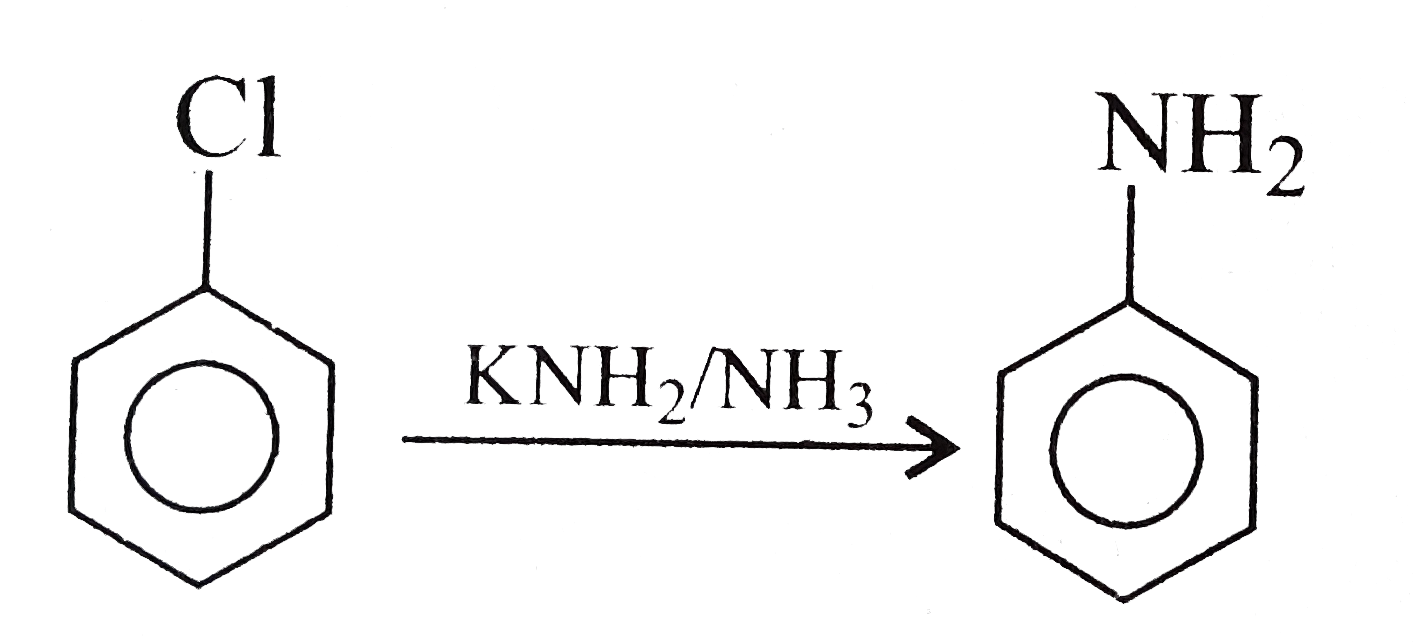
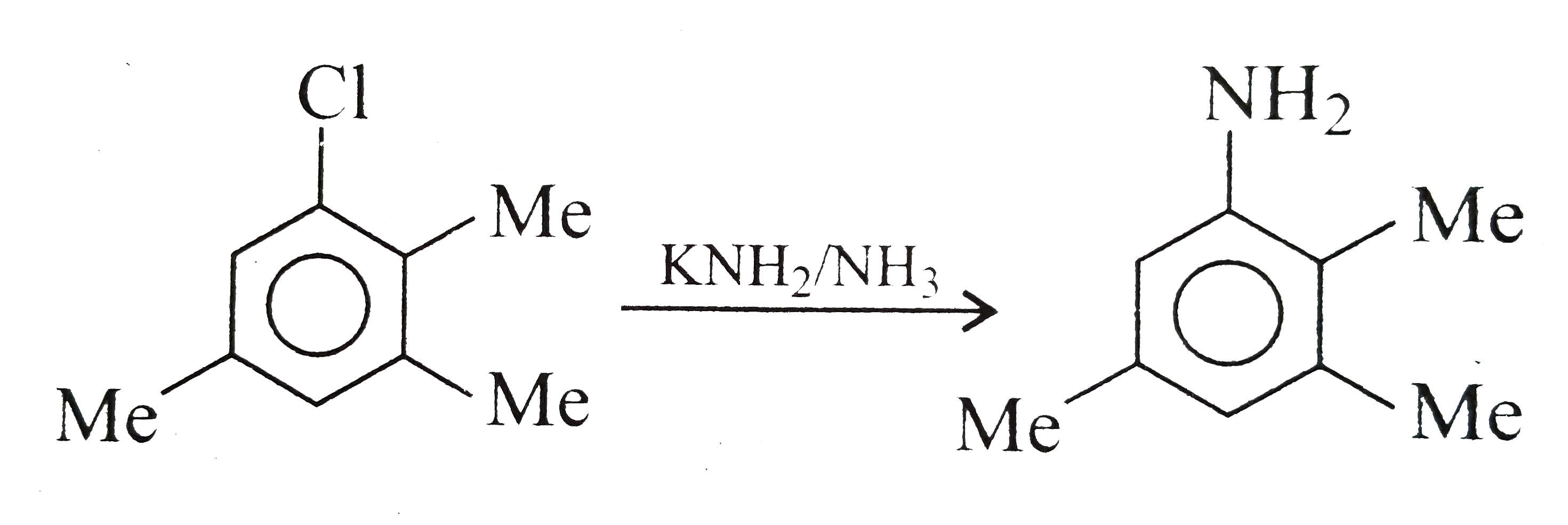

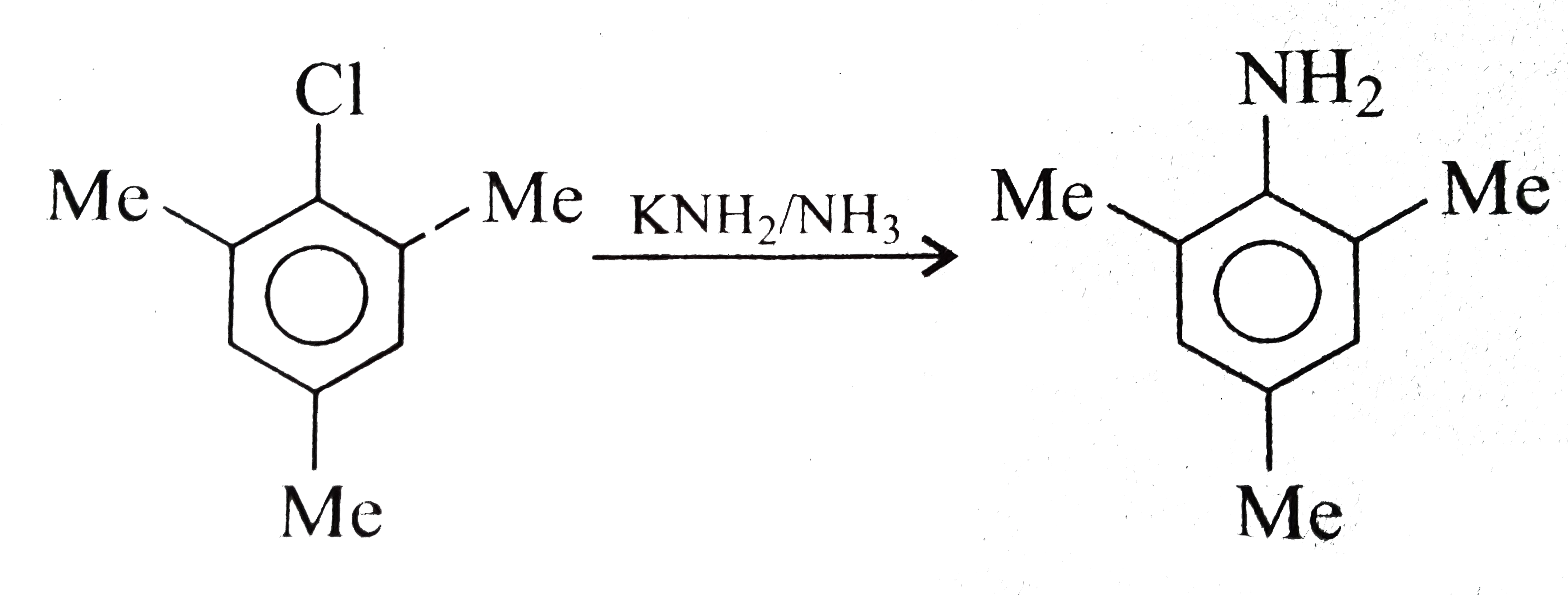
The correct Answer is:A, B
To determine which of the given reactions are feasible, we will analyze each reaction step by step.
Step 1: Analyze the First Reaction
- Reaction: Chlorobenzene + K, NH2, NH3
- Mechanism: Nucleophilic substitution via the benzyne mechanism (Elimination-Addition mechanism).
- Key Point: For the benzyne mechanism to occur, there must be a hydrogen atom at the ortho position to the halogen (Cl in this case).
- Conclusion: Chlorobenzene has hydrogen atoms at the ortho position, allowing for the elimination of Cl and subsequent addition of NH2.
- Feasibility: Feasible
Step 2: Analyze the Second Reaction
- Reaction: Chlorobenzene with CH3 groups (Me) and K, NH2, NH3
- Mechanism: Similar to the first reaction, we will assess the presence of hydrogen atoms at the ortho position.
- Key Point: The presence of hydrogen at the ortho position is crucial for the reaction to proceed.
- Conclusion: Chlorobenzene has hydrogen atoms at the ortho position, allowing for the elimination of Cl and the addition of NH2.
- Feasibility: Feasible
Step 3: Analyze the Third Reaction
- Reaction: Bromobenzene with EtO and Et
- Mechanism: We need to check for the presence of hydrogen atoms at the ortho position.
- Key Point: If there are no hydrogen atoms at the ortho position, the nucleophilic substitution cannot occur.
- Conclusion: In this case, there are no hydrogen atoms at the ortho position to facilitate the reaction.
- Feasibility: Not feasible
Step 4: Analyze the Fourth Reaction
- Reaction: Chlorobenzene with Me groups (Me) and K, NH2, NH3
- Mechanism: Again, we will check for hydrogen atoms at the ortho position.
- Key Point: The presence of hydrogen at the ortho position is essential for the reaction to proceed.
- Conclusion: Similar to the third reaction, there are no hydrogen atoms at the ortho position to facilitate the nucleophilic substitution.
- Feasibility: Not feasible
Final Conclusion
The feasible reactions are:
- First Reaction: Feasible
- Second Reaction: Feasible
- Third Reaction: Not feasible
- Fourth Reaction: Not feasible
Thus, the correct answers are 1 and 2.
---
- Reaction: Chlorobenzene + K, NH2, NH3
- Mechanism: Nucleophilic substitution via the benzyne mechanism (Elimination-Addition mechanism).
- Key Point: For the benzyne mechanism to occur, there must be a hydrogen atom at the ortho position to the halogen (Cl in this case).
- Conclusion: Chlorobenzene has hydrogen atoms at the ortho position, allowing for the elimination of Cl and subsequent addition of NH2.
- Feasibility: Feasible
- Reaction: Chlorobenzene with CH3 groups (Me) and K, NH2, NH3
- Mechanism: Similar to the first reaction, we will assess the presence of hydrogen atoms at the ortho position.
- Key Point: The presence of hydrogen at the ortho position is crucial for the reaction to proceed.
- Conclusion: Chlorobenzene has hydrogen atoms at the ortho position, allowing for the elimination of Cl and the addition of NH2.
- Feasibility: Feasible
- Reaction: Bromobenzene with EtO and Et
- Mechanism: We need to check for the presence of hydrogen atoms at the ortho position.
- Key Point: If there are no hydrogen atoms at the ortho position, the nucleophilic substitution cannot occur.
- Conclusion: In this case, there are no hydrogen atoms at the ortho position to facilitate the reaction.
- Feasibility: Not feasible
- Reaction: Chlorobenzene with Me groups (Me) and K, NH2, NH3
- Mechanism: Again, we will check for hydrogen atoms at the ortho position.
- Key Point: The presence of hydrogen at the ortho position is essential for the reaction to proceed.
- Conclusion: Similar to the third reaction, there are no hydrogen atoms at the ortho position to facilitate the nucleophilic substitution.
- Feasibility: Not feasible
The feasible reactions are:
- First Reaction: Feasible
- Second Reaction: Feasible
- Third Reaction: Not feasible
- Fourth Reaction: Not feasible
Topper's Solved these Questions
- ORGANIC REACTION MECHANISMBOOK - CENGAGE CHEMISTRY ENGLISHCHAPTER - ORGANIC REACTION MECHANISMEXERCISE - Single correct
43 Videos
- ORGANIC REACTION MECHANISMBOOK - CENGAGE CHEMISTRY ENGLISHCHAPTER - ORGANIC REACTION MECHANISMEXERCISE - Assertion-Reasoning
12 Videos
- ORGANIC REACTION MECHANISMBOOK - CENGAGE CHEMISTRY ENGLISHCHAPTER - ORGANIC REACTION MECHANISMEXERCISE - Comprehension
35 Videos
- NCERT BASED EXERCISEBOOK - CENGAGE CHEMISTRY ENGLISHCHAPTER - NCERT BASED EXERCISEEXERCISE - Chemical Equilibrium
73 Videos
- P-BLOCK GROUP 13 - BORON FAMILYBOOK - CENGAGE CHEMISTRY ENGLISHCHAPTER - P-BLOCK GROUP 13 - BORON FAMILYEXERCISE - Exercise Archives (Subjecive)
9 Videos
Similar Questions
Knowledge Check
Which of the following reactions are not feasible?
A B
B C
C D
D
Which of the following reactions is not feasible?
A B
B C
C D
D
Which of the following reactions are possible ?
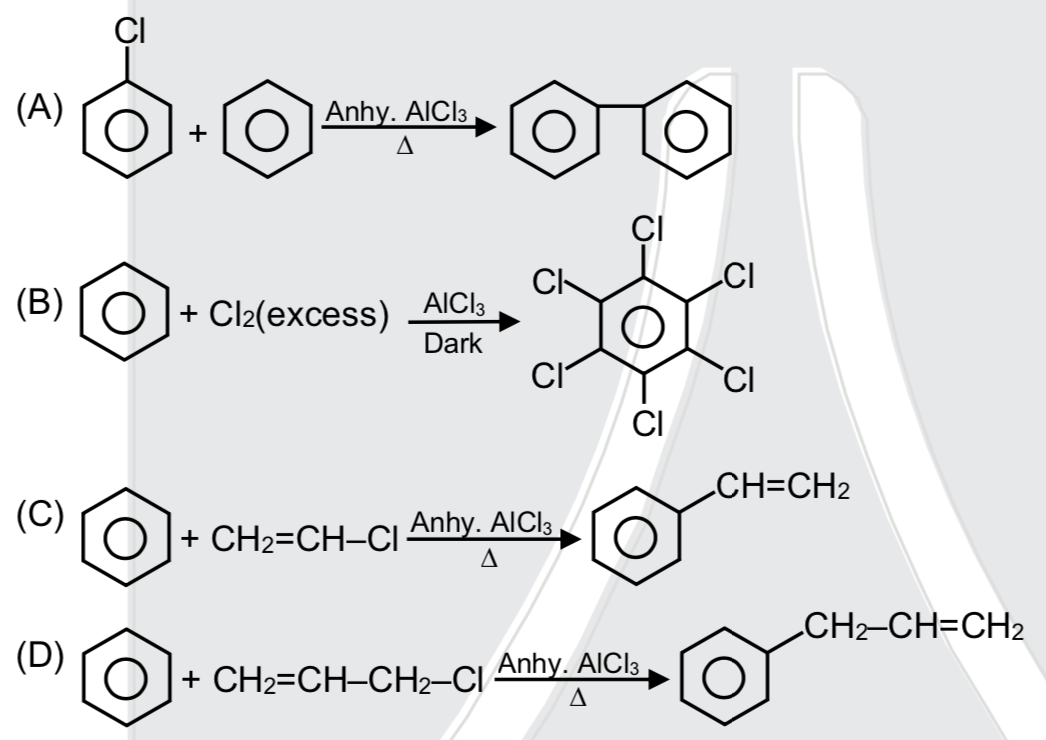
View SolutionWhich of the following reactions are possible ?

View Solution(i) Cu+2HCl2+H2(g) [ECu2+/Cu∘=.34V]
(ii)Zn+2HCl→ZNCl+(2)+H2((g)) [E(ZN2+/ZN∘=−0.76V]
(iii) Ag+2HCl→AgCl+(1)/(2)H2(g) [E(Ag+/Ag)∘=+0.80V]
Which of the following reaction is feasible ?
View SolutionWhich of the following reaction is feasible ?
View SolutionWhich of the following reaction is feasible?
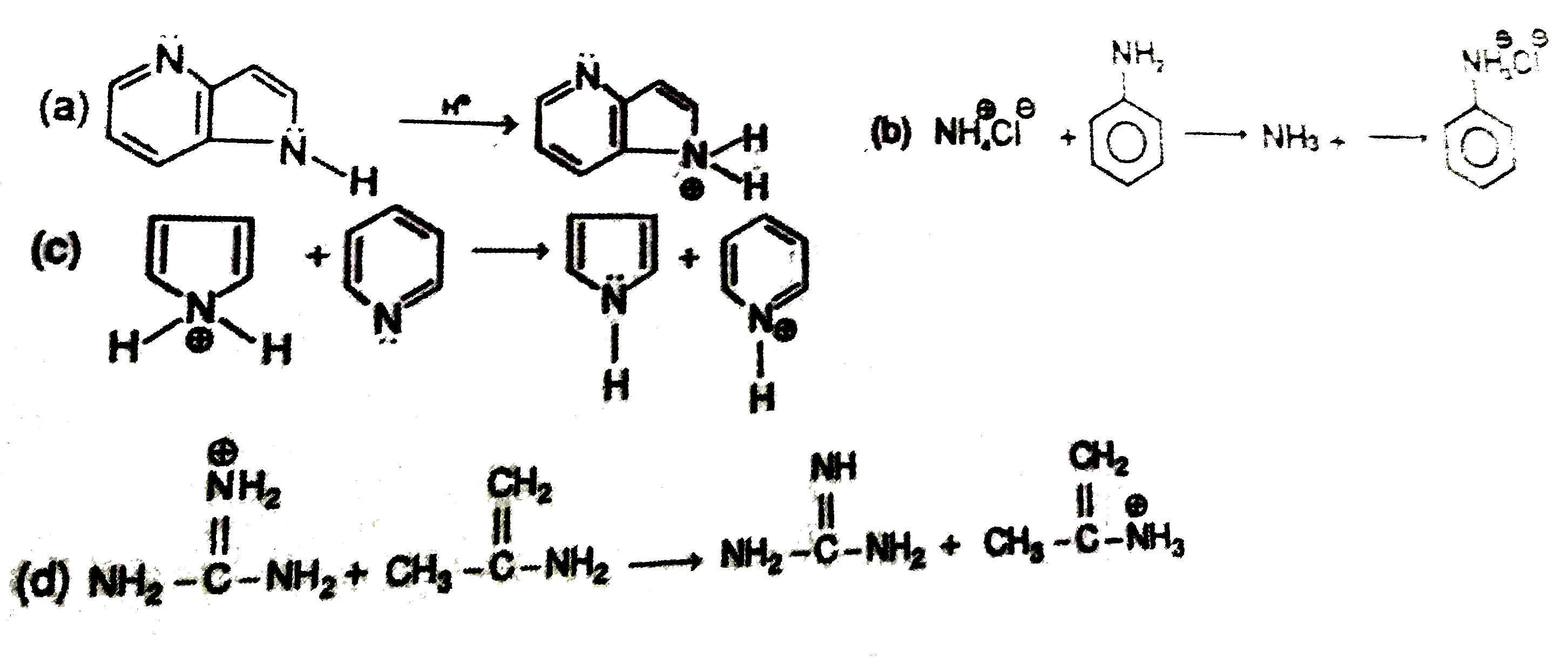
View SolutionWhich of the following reaction is not feasible?
View Solution

